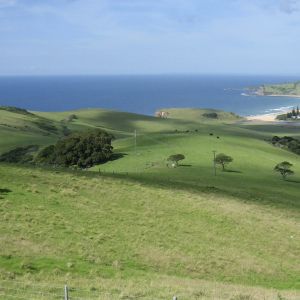Climate Change in Australia
Climate information, projections, tools and data
Projections landscape
The information presented on this website updates the information found on the former Climate Change in Australia website produced in conjunction with a Technical Report
(CCiA 2007
) and the OzClim data portal (no longer available).
CCiA 2015 is one of many initiatives, past and current, run by the federal and state governments, universities and other institutions that focus on producing data and information on future climate projections. A list of some other of the more widely known projects is given below. In some of these cases the data result from experiments conducted using the older CMIP3 suite of models .
Information portals and State Government initiatives
(External links will open in a new window)
- Victorian Water and Climate Initiative (VicWaCI) : VicWaCI is a partnership between the Department of Environment, Land, Water and Planning (DELWP), the Bureau of Meteorology, CSIRO, and the University of Melbourne. The initiative seeks to better understand Victoria’s climate and water resource situation. In December 2020, the synthesis of research findings was released in the report Victoria’s Water in a Changing Climate (PDF download) .
- Victorian Climate Projections 2019 : In 2019, the Victorian Government released the latest climate projections for Victoria. For this work, the Department of Environment, Land, Water and Planning and Wine Australia funded new dynamical downscaling at 5 km resolution. Uniquely, the Victorian Climate Projections 2019 (VCP19) project combines the new modelling with pre-existing results from global climate model (GCM) and multiple regional climate model (RCM) simulations. These data can be viewed using the Climate Futures toolkit and downloaded from CCIA here .
- Queensland Future Climate : The Queensland Government partnered with the University of Queensland to develop high resolution climate projections to underpin climate adaptation across Queensland’s regions. These projection datasets were developed by downscaling 11 CMIP5 global models to 10 km under two emissions pathways. To obtain more detailed information and the data (gridded and/or for other regions) go to the Queensland Future Climate Portal .
- Climate Futures for Tasmania : This project details the general impacts of climate change in Tasmania over the 21st century, with a description of past and present climate and projections for the future. Follow-on work is currently looking at the Australian Alps.
- South Eastern Australian Climate Initiative (SEACI) : Established in 2005 to improve understanding of the nature and causes of climate variability and change in south-eastern Australia. It concluded in September 2012.
- Indian Ocean Climate Initiative (IOCI) : This program investigated the causes of climate change in Western Australia and developed regional projections. It ended in 2013
- The Goyder Institute for Water Research : This program was established in 2010 to support the security and management of South Australia’s water supply and contribute to water reform in Australia. CMIP5 data are used in this project.
- South East Queensland Climate Adaptation Research Initiative (SEQCARI) : This program provides access to information on climate projections and adaptation options for settlements in South-east Queensland. It ended in November 2012.
- NSW and ACT Regional Climate Modelling (NARCliM) :This project developed an ensemble of high-resolution, regional climate projections for eastern Australia in collaboration with the NSW Government. A wide variety of climate variables are available at high temporal and spatial resolution for use in impacts and adaptation research.

data portals
(External links will open in a new window)
- Queensland Future Climate Dashboard : Data portal for viewing and downloading datasets from the Queensland Future Climate project.
- Queensland Future Climate gridded dataset : High-resolution gridded data (10 km) of individual ensemble runs and ensemble averages with summary changes as well as daily and monthly time-series for a range of climate metrics.
- Victorian Climate Projections 2019 (on CCiA) : Data are available from CCiA's VCP19 pages. Guidance is also provided on how to make best use of the projection datasets. The Victorian Government is developing a new portal to provide a more user-friendly interface to the VCP19 data.
- Research Data JCU (formerly the James Cook University Tropical Data Hub): A research data repository that includes high-resolution climate surfaces scaled by projected changes from climate models
- AdaptNSW : A wide range of information and data, based on the NARCliM datasets, are available from the Adapt NSW portal.
- The Consisten Climate Scenarios project : This project provides Australia-wide projections data for 2030 and 2050 as daily time-series in a format suitable for most biophysical models. It provides daily data for many climate variables for individual locations and on a 5 km grid across Australia.
- CliMond : a set of free climate data products consisting of high resolution interpolated surfaces of recent historical climateand relevant future climate data. These are available at monthly time-scales, for 35 Bioclim variables, in CLIMEX format, and as the Köppen-Geiger climate classification scheme
- Climate Futures for Tasmania (datasets) : data portal for projections developed from the project.
Projections data from some of these projects (e.g. Qld Future Climate, Victorian Climate Projections 2019), and all CMIP3 output, are comparable with the CMIP5 modelling results using the Climate Futures web tool. Comparison of results from CMIP3 and CMIP5 can also be found in the Appendix A of the Technical Report.
For some NRM clusters (e.g. see below) these local projections should be considered for use if appropriate, remembering to discuss any results in context of the broader set of model results.
- NARCliM : Central Slopes, East Coast, Murray Basin, Monsoonal North, Rangelands
- Goyder Institute for Water Research: Southern and South Western Flatlands, Rangelands, Murray Basin
- Climate Futures for Tasmania : Southern Slopes
- Victorian Climate Projections 2019: Southern Slopes
- Queensland Future Climate: Wet Tropics, Monsoonal North (East), Central Slopes, East Coast (North), Rangelands (North)
Page last updated: 19th March 2020


